5: NOW! That's what I call a healthy coping mechanism
On running toward—instead of away from—the things I can't control
Running and I have always made an uneasy pairing. When I say this, I do not simply mean that running was consistently difficult for me or that I lacked the ambition to forge a better relationship with one of the most accessible forms of exercise in existence. Not the case! Rather, running has long played the role of a femme fatale of sorts in my life—a desirable, attractive pursuit that has consistently conspired with my body to betray me in odd, underhanded ways.
An unstructured and freeform thing, running is just an impulse when you’re a child—something you do in the confines of a tiny game you play on a tiny field with other tiny children. If you stuck with one of the sports your parents chose for you long enough (for me, soccer), running hard at practices and games becomes insufficient if you want to make the right team each year. Suddenly, running is structured. So began my relatively antagonistic relationship with running—one marked by stress and the weight of expectation rather than enjoyment of the sensation in the moment. A bad run with a subpar time became an omen, a surefire sign my performance would manifest in a subpar soccer tryout. It was paralyzing, often leading me to ignore my personal conditioning altogether and create a self-fulfilling prophecy of sorts when it came to my fear of failure. In all the years I played soccer, I never was able to lose myself while running outside of the confines of a game, let alone find a sense of peace with the fluctuating ability of the body.
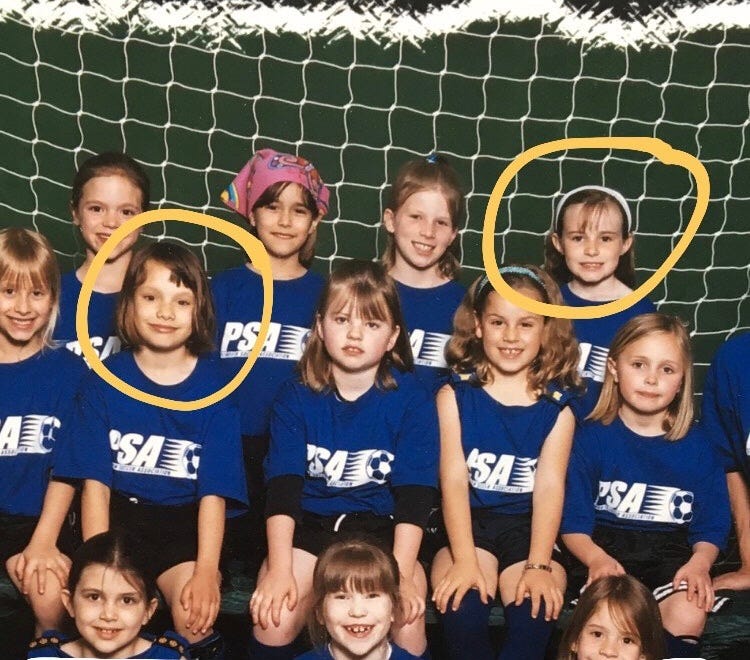
This stress taking root in my mind was then compounded by the physical stress my body endured. My high level of activity combined with growth spurts led me to develop Osgood-Schlatter Disease in both of my knees: growth of a painful bone spur just beneath the kneecap. While it was initially fun to joke with my friends about being “diseased,” the fun was short-lived. Per doctors’ orders, I spent a full winter conditioning season on the sidelines. Once I began playing again, the pain remained. I was a different, more encumbered player as a result. I slathered my joints in IcyHot®, tied yellow pre-wrap under both kneecaps to keep pressure on my bone spurs (which made for legendary soccer tans, let me tell you), and iced my knees every time I played. Playing while recovering was hard enough—I couldn’t add running to the equation.
I continued to manage my pain and play on for years until I outgrew Osgood-Schlatter’s, but I no longer trusted my body to keep up with the pace set for me by competitive soccer. Sure enough, my high school soccer “career” ended when I developed a mysteriously intense and oft-misdiagnosed pain in the back of my left heel. It hurt to the extent that merely walking in cleats made me, then a sixteen-year-old with a high pain tolerance, cry. Eventually, it was identified as Haglund’s deformity: an enlargement of the bony section of the heel connecting to the Achilles caused by irritation from rigid shoes or (in my case) by having a certain inherited foot structure. I spent a barefoot summer taking painful cortisone injections to the heel, genuinely afraid I wouldn’t be able to hike, run, or wear normal shoes ever again. I read message board horror stories from long-term sufferers who had to saw the heels out of their running shoes or undergo invasive bone-shaving surgeries requiring detachment and reattachment of the Achilles just to deal with the pain. Whether I would fully recover was uncertain, but the one thing that was certain was that recovery required me—the object at rest—to stay at rest. I had to come to peace with the fact that I might never be able to run again at a pretty young age, instead focusing on relearning how to walk while wearing shoes that weren’t rubber slide sandals.
The relatively vegetative state I fell into for the remainder of my high school years genuinely saved my foot, but it severed me from my identity as a physically active person. Rediscovering that version of myself was a fearsome process, one that could potentially reignite my Haglund’s deformity, leaving me incapacitated and shoeless yet again. So, I filled my college years with utilitarian forms of exercise: speed-walking miles upon miles of the UW-Madison campus on my way to class and reluctantly biking to work on my single-speed. I sporadically made trips to the gym and began running across campus, which allowed me to see that dipping my toes back into exercise was both possible and enjoyable. I continued on, tentative as ever, until I graduated and moved back to my hometown in Minnesota.
There, with newfound free time and space, I ran through the neighborhoods my friends and I lived in as children, retracing my steps and rebuilding a more positive relationship with running in the process. I followed the Couch to 5K (C25K) program in the hopes of incrementally becoming a distance runner. I walked and ran in spurts every other day, making consistent progress until I was running longer and longer distances without walking whatsoever. But soon enough, my body raised its white flag once again. One morning, I ran through a particularly sharp pain in the arch of my left foot. The next day, my foot was so swollen and tender that it couldn’t bear weight and made me cry—a tried-and-true personal metric for concern as an injury-prone person. I was convinced it was broken, so I hobbled to the doctor for uneventful X-rays and an eventual diagnosis of tendinitis. Yet again, all I could do was pump my brakes and wait to heal. So began a cyclical summer of assuming I had recovered from tendinitis, finishing a full run, and ending up in so much pain I was unable to walk for days on end. Ultimately, I never finished the full C25K program, tapping out the week I was set to reach my 5K goal.
At this point, I was becoming convinced I would never be a runner—that my body wasn’t made to bear its own weight in motion. I spent the remainder of the year treating my retail job as fitness, walking about three miles per bookselling shift (and sometimes over five in the Christmastime rush). I coped with the stress of studying for the GRE, applying to graduate school, and preparing for my Japan Exchange Teaching (JET) Program interview the way I had in college: alternately overeating and undereating, staying up far too late, and staring at screens for far too long. I didn’t feel right in my own skin, but I doubted that I had the physical toolkit to do much about it. I settled into a largely sedentary existence, unhappily giving myself over to the healing process so much so that I was afraid to test whether or not I had actually healed.
Regardless of my lack of physical motion, life barreled on: I was accepted to graduate school, selected to assistant-teach abroad for the JET Program, quarantined after possibly contracting COVID while visiting New York and London (I eventually tested negative), and laid off from my bookselling job all in the span of a few months. The pace of my day-to-day life slowed to a crawl, yet deadlines were still rapidly approaching, asking me to make decisions that would define years of my life even while in the midst of a raging global pandemic. The future was so obscure and uncertain, yet I was expected to commit myself to a plan that could be completely compromised by COVID—and to do so in a timely manner. My head felt full to bursting, and I couldn’t ignore the impulse to try to outpace my thoughts.
I began wading through the mess of my mind on “stupid little fucking afternoon strolls.” Returning to the well-worn sidewalks outside the confines of my childhood home was freeing, refreshing me mentally and physically. This concentrated time to myself, away from all usual distractions, allowed me to clear my mind. I began an internal dialogue, asking myself what I truly wanted and what risks I was willing to take in order to get it. Many miles (and tears, if I’m being honest) later, I decided to defer my admission to graduate school and turn down my opportunity to teach in Japan in order to stay close to my family and prioritize health and safety. I was unmoored, everything I had worked toward over the past year suddenly off the table and the year to come taking on the shape of an all-consuming black hole. In spite of (or maybe because of) my spiraling, I decided to pick up my pace and run again—to see what else I could weather.
I started slow. I stretched religiously, returning to the same three songs to get into the right headspace before each run: “The River,” “Garden Song,” and “Too Many Birds.” I returned to the old roads that broke me a year ago while listening more closely my body, increasing my distance ever-so-slightly over time. I finally committed to never timing myself again, focusing more on making my runs sustainable over time instead. Relatedly, I accepted the fact that my body likely couldn’t take on more than four runs per week and promised myself it wasn’t a failing to adjust my speed as needed. I focused on the fact that just putting my feet to the pavement contributed to my overall wellbeing and would bring me closer to where I wanted to be whether it was a “good” run or not. By finally affording myself the flexibility to run for the sake of running, every run became a good run. My body responded in turn, carrying me to new milestones (including my goal distance of 5K and, most recently, my personal best of five miles) without injury.
As my mileage climbed and I began consistently looking forward to lacing up, running became a way I could directly control and process my emotions and thoughts. Beyond my own loss of personal direction, I’ve had a lot of people I’ve cared deeply for come in and out of my life this year through different means: death, relocation, and other unexpected endings. My exercise-induced bronchoconstriction drowned out my heartache as I made my body home to the pain of physical improvement—pain that was a visitor I invited in rather than a permanent resident. While running, I could focus solely on regulating my breathing, running through a cramp, or conquering an uphill climb for just a moment. These small accomplishments and the endorphin rush that accompanied them allowed me to be more fully present, acknowledging my embodied experience as well as my mental and physical strength. They gave me belief in myself and my own fortitude, and I found that I could more fully shoulder the feelings and problems that once weighed on me as a result.
In bringing me closer than ever before to a semblance of (excuse me while I go a little ~woo-woo~ on you) mind-body peace, I can honestly say this is the one way in which COVID has concretely improved my life. When so much fell away due to the impact of the pandemic, I finally took the time to put my wellbeing first, providing myself with direction in the form of running. I’m becoming reacquainted with my muscles, with seeing the frame of myself and trusting where it can take me if fueled properly and given the opportunity. Every run affords me distraction-free time and space to get in tune with myself, processing and regulating my emotions in a productive way. Like with Anna’s newfound organizational prowess discussed in last week’s newsletter, it is a small way I can re-exert control over my current experience. In a year that has felt stagnant at best and regressive at worst, running has become a tangible form of progress and a genuinely healthy coping mechanism for me. I’ve proven to myself that my mind, heart, and body can weather a great deal and come out better for it.
As the owner of an especially fragile body, I’m the last person to recommend running as a cure-all for every case of COVID-related malaise. What I will suggest is that you take the time to acknowledge the ways in which you’ve made an effort to care for yourself and continue to grow amidst such uncertain times. Given the state of the world and its current limitations on our routines, progress might look a lot different than you might expect. But progress is progress. Accepting that and meeting yourself where you are will allow you to give back to yourself in the present and better prepare yourself to give and take on more in the future. This world is so unkind. Finding a sustainable way to be kind to yourself against all the odds, and to even surprise yourself by growing a bit in the process, is a cause more than worth celebrating.
Severance by Ling Ma. This book knocked me over. It was published in 2018, but content-wise, it is eerily similar to the pandemic we’re currently living in. The pandemic in the novel also originates in China, is marked by easy-to-miss symptoms of the common cold, and requires the uninfected to wear masks and quarantine. The parallels are nothing short of wild. Severance veers off from our current narrative by going full-on post-apocalyptic, covering the sudden leap from working from home and lapses in quarantine to attempting to live on and find purpose while the majority of society becomes a zombie-like infected mass. In the process, Ma reflects on the ethics of global capitalism, office politics, and the millennial experience. If it sounds like a lot to take on, it is, but it truly works. I tore through this beautifully-written novel despite it hitting close to home. An excerpt that struck me as particularly similar to our own early days of quarantine:
I was like everyone else. We all hoped the storm would knock things over, fuck things up enough but not too much. We hoped the damage was bad enough to cancel work the next morning but not so bad that we couldn’t go to brunch instead […] And finally, it took a force of nature to interrupt our routines. We just wanted to hit the reset button. We just wanted to feel flush with time to do things of no quantifiable value, our hopeful side pursuits like writing or drawing or something, something other than what we did for money. Like learn to be a better photographer. And even if we didn’t get around to it on that day, our free day, maybe it was enough just to feel the possibility that we could if we wanted to, which is another way of saying we wanted to feel young, though many of us were that if nothing else.
The fact that Phoebe Bridgers and Maggie Rogers covered “Iris” by the Goo Goo Dolls (one of my favorite melodramatic alt rock staples) and sold 28,000 downloads in a day to benefit Stacey Abrams’s voting rights organization Fair Fight. Yes, I was a downloader myself. If you missed the one-day opportunity to get on board, you can still donate to Fair Fight, supporting efforts to flip the Senate blue and dethrone Bitch McConnell as Senate majority leader in Georgia’s upcoming runoff election. You can also listen to the track here.
“You Still Need to Have the Conversation” by Anne Helen Peterson at Culture Study, a newsletter installment recommended to me by Anna that intertwines especially well with the piece I wrote last week about living for others and battling moral fatigue as COVID rages on. Peterson covers the way individualism has eclipsed collectivism when it comes to our COVID response, specifically focusing in on how failures of federal and state leadership have put us in a position where one-on-one conversations with those making less-than-considerate choices are our last line of defense. An excerpt that stayed with me:
Just remember that the most affective appeal to an individualist is always going to be from the people they care about in their immediate sphere. A state-wide lockdown might not change their behavior. An emailed article certainly won’t. But you might.
This advice blows. No one needs more work. We’re all emotionally fatigued and the last thing we want to do is engage in a delicate and heartfelt appeal to an obstinate friend or family member. To be clear: if you fail to convince someone, it’s not your fault. The decision is still ultimately theirs. What matters, and I mean this truly, is that you tried…
But if you feel as helpless as me, there’s little we can do besides looking at the numbers, staying as safe as possible, waiting for actual leadership, and having these grievous, exhausting, essential conversations until they start to take hold.
The documentary Traveling with Yoshitomo Nara, which is available in full for free on YouTube. Nara usually paints children, their expressions shifting from confrontational to serene as he has grown with his work over time. The film itself covers this transition in how he paints his subject matter, following him throughout the year leading up to his major hometown exhibition A to Z. I described its effect on me to my friend Alec, who recommended it, like this: “That was so life-affirming. It felt really good to just see people connecting over art and working toward a common goal. And as much as I loved his work, I didn’t really consider the fact that the change in tone would be so closely related to his own outlook and interconnectedness with others. It was really special to see how his own journey with letting others in and collaborating has changed him versus the state of the world changing his point of view, if that makes sense.” I couldn’t recommend this documentary enough to anyone who is interested in Nara’s work, artmaking in general, or genuine depictions of how art can bring people together. Just gorgeous stuff.

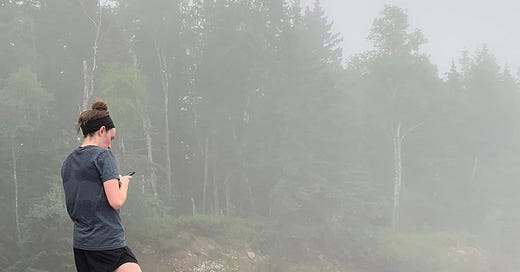


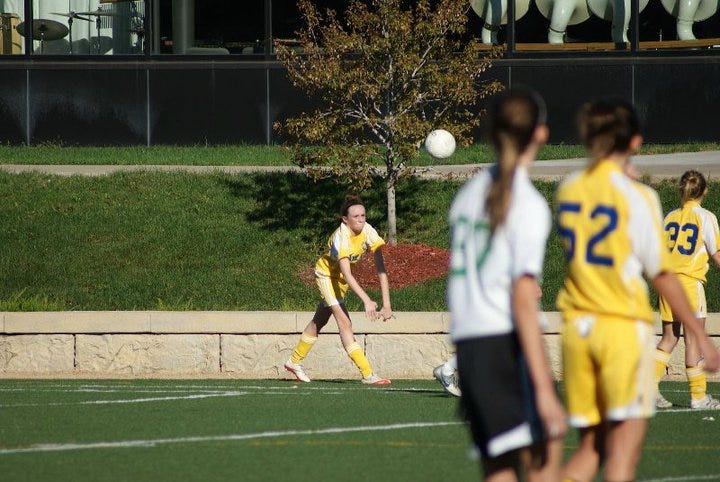



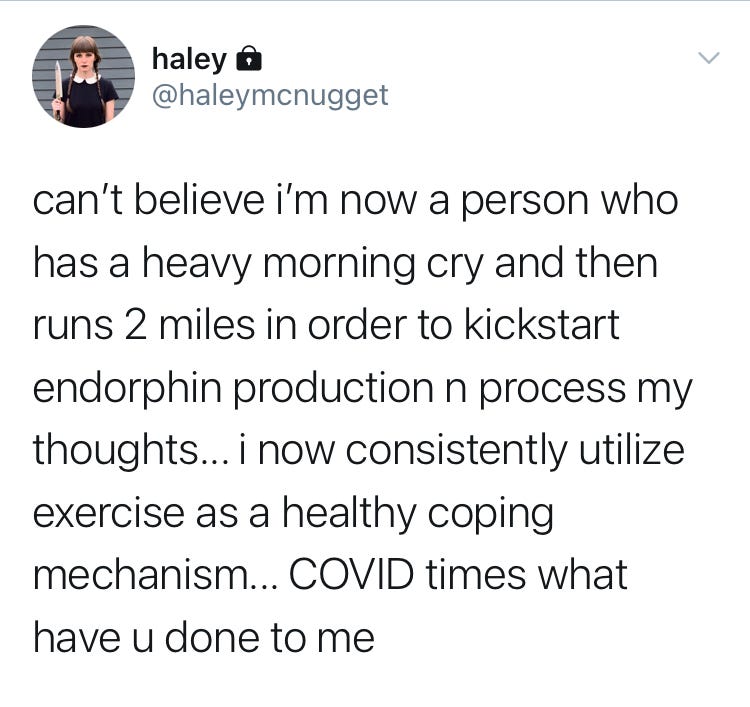
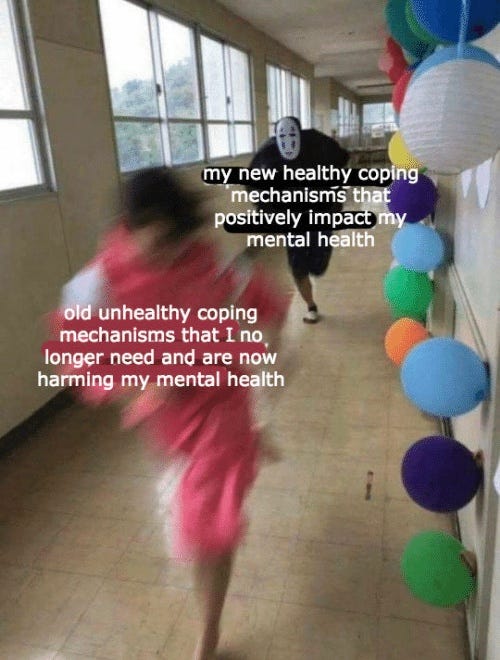


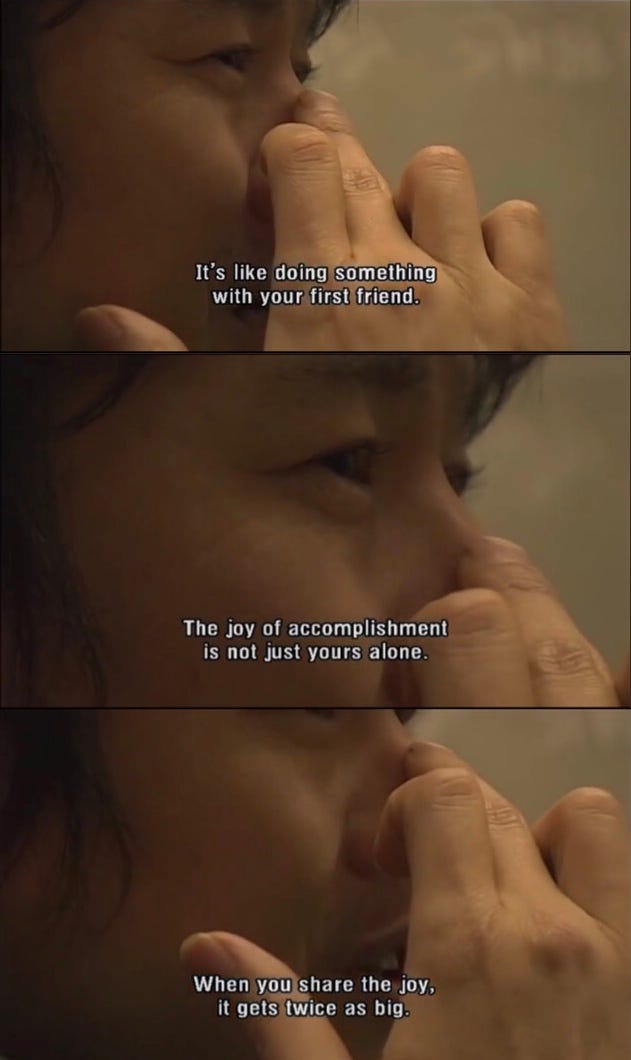
Not sure what this “soccer” is that you speak of, but I can somewhat relate (albeit not to the same extent) having suffered issues with both ankles (I assume due to growing) when I was 13 and not being able to play football for the best part of a year. I am very grateful/privileged that for a good chunk of my childhood/adolescence I got to play football every weekend when others couldn’t